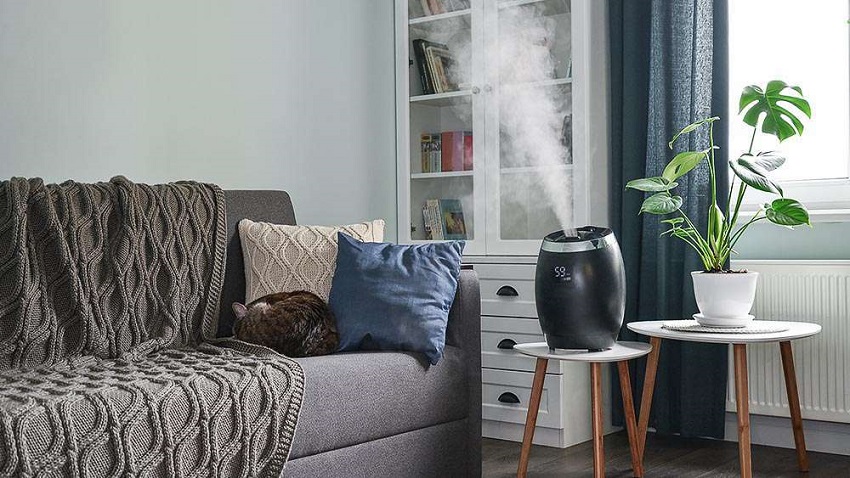Dry air in the home can cause discomfort and health issues. It can lead to dry skin, irritated eyes, and even respiratory problems. In this article, we will explore the causes and effects of fix dry air and provide practical tips to fix the problem. By following these suggestions, you can improve the air quality in your home and enhance your overall well-being.
Having a comfortable indoor environment is essential for our health and well-being. However, during certain seasons or in arid regions, the air inside our homes can become excessively dry. Dry air not only affects our comfort but can also have negative consequences for our health. Understanding the causes and effects of dry air is crucial in finding effective solutions to fix this problem.
Understanding Dry Air in the Home
What Causes Dry Air?
Dry air in the home can be caused by various factors. One common cause is low humidity levels, which occur when the air lacks moisture. Heating systems, especially during the winter, can contribute to dry air by removing moisture from the air. Additionally, climate and weather conditions can influence the humidity levels indoors.
Effects of Dry Air on Health and Comfort
Living in an environment with dry air can lead to several health and comfort issues. Dry air can cause dry and itchy skin, chapped lips, and irritated eyes. It can also worsen allergies and respiratory problems, making it difficult to breathe. Moreover, dry air can result in an increase in static electricity, leading to uncomfortable shocks.
Symptoms of Dry Air
To identify if your home has dry air, it’s important to recognize the common symptoms associated with it.
Dry Skin and Lips
If you notice that your skin feels dry, tight, or flaky, it may be a sign of low humidity in your home. Similarly, chapped lips are another indication that the air lacks moisture.
Dry Eyes and Irritation
Dry air can cause your eyes to feel dry, itchy, or irritated. This can lead to discomfort, redness, and even blurred vision.
Increased Allergies and Respiratory Issues
Dry air can worsen existing allergies or respiratory conditions such as asthma. It can cause throat irritation, coughing, congestion, and difficulty breathing.
Static Electricity
If you experience frequent static shocks when touching objects or other people, it’s likely due to the dry air in your home.
How to Measure Humidity Levels
To determine the humidity levels in your home, you can use a device called a hygrometer. Hygrometers are readily available and affordable. By measuring relative humidity, they provide an accurate representation of the moisture content in the air.
Hygrometers and Their Importance
Hygrometers are valuable tools for monitoring humidity levels. They help you assess whether the air in your home is too dry or too humid. By keeping track of the readings, you can take appropriate measures to maintain optimal humidity.
Ideal Humidity Levels for Homes
For optimal comfort and health, the ideal humidity range for homes is generally between 40% and 60%. However, personal preferences may vary, so it’s essential to find the humidity level that suits you best.
Tips to Fix Dry Air in the Home
There are several effective ways to fix dry air and increase humidity levels in your home. Let’s explore some practical tips:
Use a Humidifier
One of the most efficient ways to add moisture to the air is by using a humidifier. Humidifiers come in different types, such as cool mist and warm mist. They release water vapor into the air, increasing humidity levels and alleviating dryness.
Place Bowls of Water
A simple and cost-effective method to combat dry air is by placing bowls of water in your home. The water evaporates naturally, adding moisture to the air. You can place bowls near radiators or heating vents for better dispersion.
Hang Damp Towels
Another quick fix for dry air is hanging damp towels around your home. As the towels dry, they release moisture into the air, increasing humidity levels.
Limit the Use of Heating Systems
While heating systems are necessary during colder months, they can contribute to dry air. To prevent excessive dryness, avoid cranking up the heat excessively and consider using a humidifier alongside your heating system.
Keep Houseplants
Houseplants not only beautify your home but also release moisture through a process called transpiration. Having a few plants strategically placed around your home can help increase humidity levels naturally.
Ventilate Your Home
Proper ventilation is essential for maintaining a healthy indoor environment. Opening windows and allowing fresh air to circulate can prevent the buildup of dry air. However, be cautious in extreme weather conditions or areas with low humidity outside.
Maintenance and Care for Humidifiers
If you choose to use a humidifier, it’s important to follow proper maintenance and care procedures to ensure its effectiveness and longevity.
Cleaning and Changing Water Regularly
To prevent the growth of mold and bacteria, clean your humidifier regularly as per the manufacturer’s instructions. Also, change the water daily to avoid stagnant water that can lead to contamination.
Using Distilled Water
Using distilled or demineralized water in your humidifier can minimize the buildup of mineral deposits, which can affect its performance and longevity. Tap water can contain minerals that can create a white residue, known as “white dust.”
Avoiding Over-Humidification
While it’s important to increase humidity levels, excessive moisture can lead to its own set of problems, such as mold and mildew growth. Maintain a balanced humidity level within the recommended range to avoid over-humidification.
Additional Considerations
Apart from the tips mentioned above, there are a few additional considerations to keep in mind when dealing with dry air in your home.
Protecting Wooden Furniture and Floors
Dry air can cause wooden furniture and floors to shrink or crack. To protect them, consider using a humidifier or employing other methods to maintain appropriate humidity levels.
Avoiding Excessive Moisture
While adding moisture is essential, excessive moisture can lead to condensation and dampness, creating an environment favorable for mold and mildew growth. Strike a balance and avoid excessive moisture accumulation.
Seeking Professional Help
If you’ve tried various methods and are still struggling with dry air in your home, it may be beneficial to consult a professional HVAC technician or an indoor air quality specialist. They can assess your home’s specific needs and provide appropriate recommendations.
Conclusion
Dry air in the home can be uncomfortable and have negative impacts on your health. By understanding the causes and effects of dry air, as well as implementing practical solutions, you can improve the air quality in your home. Whether through the use of humidifiers, natural methods, or professional assistance, taking steps to fix dry air will enhance your overall well-being.
FAQs
Q: Can dry air cause nosebleeds?
A: Yes, dry air can lead to nasal dryness and irritation, which may contribute to nosebleeds, especially in individuals prone to nosebleeds.
Q: Can dry air worsen respiratory conditions like asthma?
A: Yes, dry air can trigger or exacerbate respiratory conditions like asthma by irritating the airways and making it harder to breathe.
Q: How often should I clean my humidifier?
A: It’s recommended to clean your humidifier at least once a week to prevent the buildup of mold, bacteria, and mineral deposits.
Q: Can I use essential oils in my humidifier?
A: Some humidifiers are compatible with essential oils, but it’s important to check the manufacturer’s instructions. Not all humidifiers are designed for essential oil use.
Q: Are there any health risks associated with high humidity levels?
A: Excessive humidity can create a favorable environment for mold, dust mites, and other allergens. It’s important to maintain a balanced humidity level to avoid these issues.







